

After the bull fight, I returned to central Madrid to visit the Thyssen Bornemisza Museum, a great collection of 800 paintings that many critics feel is the most important privately assembled art collection anywhere. However, like many places in Spain, especially churches, photography is not allowed. (Something to hide?) So while I enjoyed the Museum immensely, I have nothing to show for it. If you want, you can see some of this fine collection by clicking here.

This no photo policy was also the case for Madrid's less interesting museum of modern art, Centro de Arte Reina Sofía. The collection was OK -- it does include Picasso's Guernica (above) -- if you like 20th century Spanish stuff. The building, however, was quite interesting as it was a huge remodeled hospital. Paris has its Pompidou Centre: a better collection (maybe) in a worse building (definitely). Next I wandered the streets on a sunny Sunday afternoon.
The picture below shows nothing in particular, which is why I took it. (No, not deliberately to bore you -- I don't have to even try to do that; rather to show what Madrid looks like when it's not being monumental):
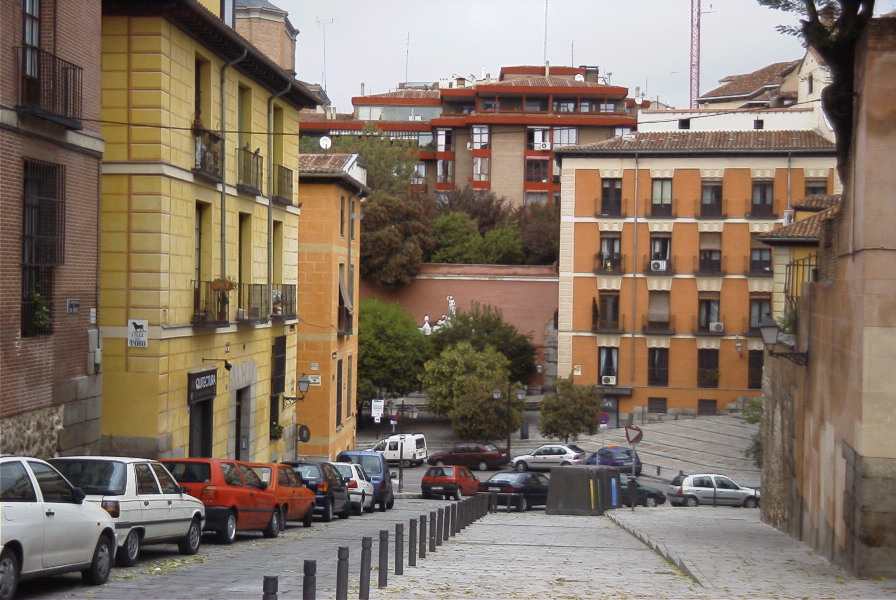
Note the hills, and the old and the new, all living together quietly. Madrid does not have the architectural consistency of central Paris, or the medieval flair of Toledo. But it is, nonetheless, a city that works at keeping its old alive while making room for the new.
But some of the older streets have remarkable architectural consistency, like this almost Parisian scene looking toward the hexagonal opera house (Teatro Real):
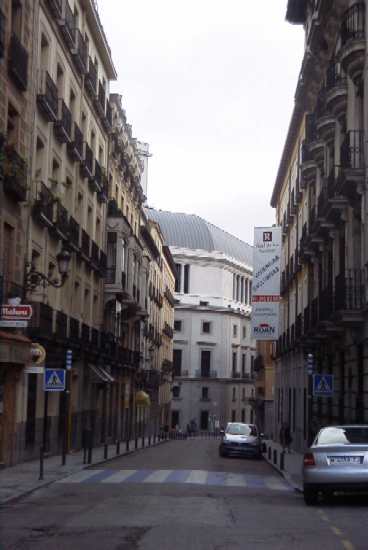
One detail of Madrid life quite appealing is the street signs, usually in ceramic, and often depicting some aspect of what's on the street such as this one:
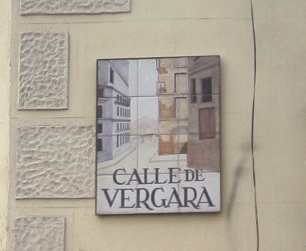
I found ceramic to be a popular media for signs throughout Spain -- on streets, stores, whatever.
Near where the "nothing much" picture was taken stands (since at least the 12th century) the brick tower of St. Nicolas church, the oldest surviving religious structure in Madrid. After all the modifications, it is a vertical monument to the history of architecture with the oldest Mudejar styles at the bottom (like deep strata at a dig) moving upward through Gothic ribs to baroque spires. This religious space altered its architecture to accommodate the religions of the day (we would see this to be typical of the older religious buildings throughout Spain.)
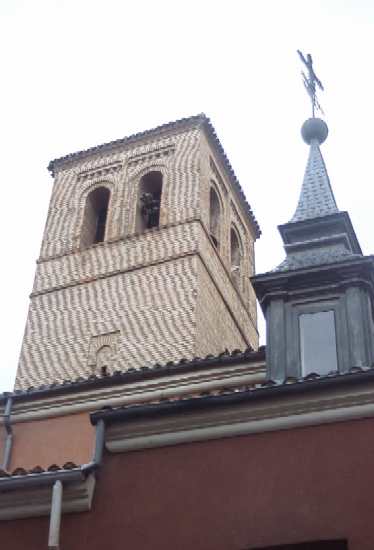
Nearby is a more recently built (1914) San Miguel Market, named after the church it replaced. This is the last surviving iron encased market (with glass added later).
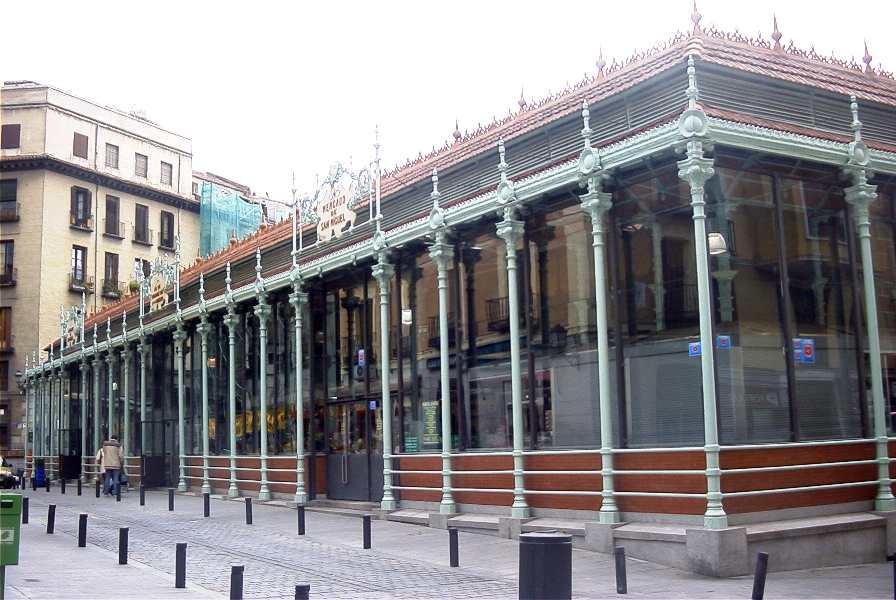
Within shouting distance is the Arco de los Cuchilleros, once the knifemakers (cuchilleros) shop, now an upscale gift botique whose arch is one of the nine that leads into the Plaza Mayor:
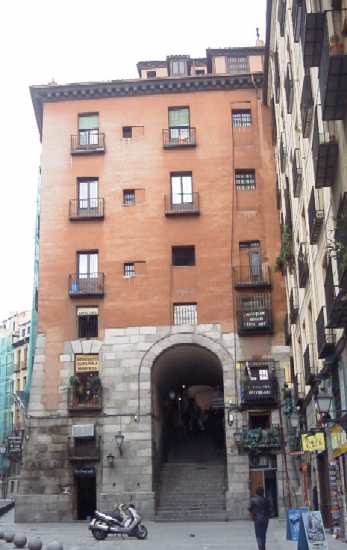
A few blocks away on Main Street (Calle Mayor) is the Capitania General in one of the finest examples of 17th century civil architecture:
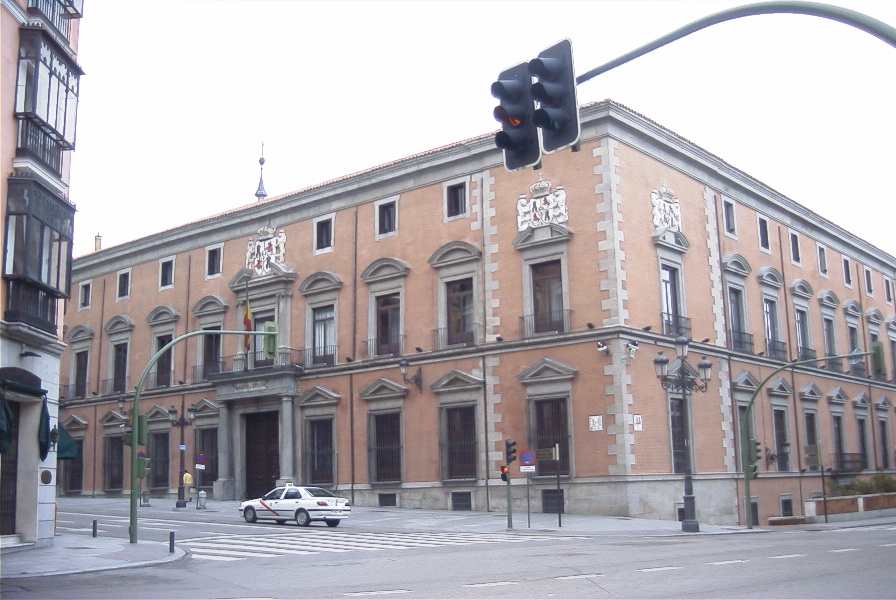
Across the street is the Instituto Italiano de Cultura housed in a 17th century mansion:
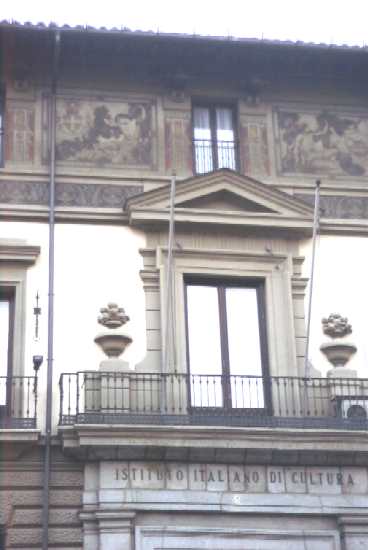
Heading back to the Plaza Mayor, one sees the city hall (called Ayuntamiento everywhere in Spain) which is pretty well ignored by the guide books, but not by my fearless digital camera:
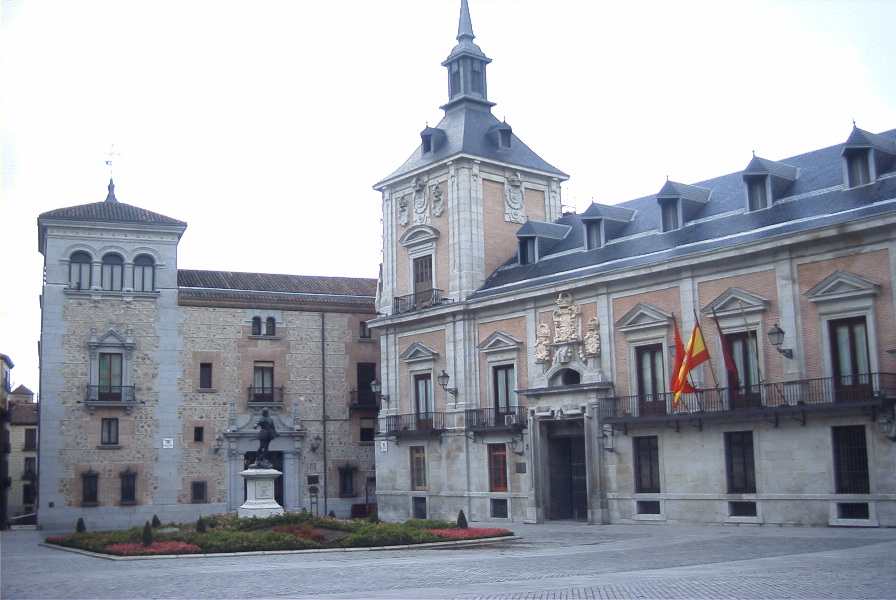
This looked pretty tame when compared to the equivalent Hotel de Ville in Paris.
All this leads, of course, to the heart of any recently-built Spanish town, the Plaza Mayor. Madrid's (built in 1619 but extensively remodeled in 1853 after three fires) is quite large, as one would expect, and built in a perfect rectangle, reminding me of the Place des Vosges in Paris (but with a plaza in the middle instead of Paris's park).
Typically Plaza Mayors are the heart of Spanish towns and see much pageantry and bullfights and, in the old days, Inquisition trials and hangings.
Madrid's Plaza Mayor became the center of the capital after the Habsburg's established the town as the capital of their empire in 1621. Here's two sides of the Plaza Mayor:
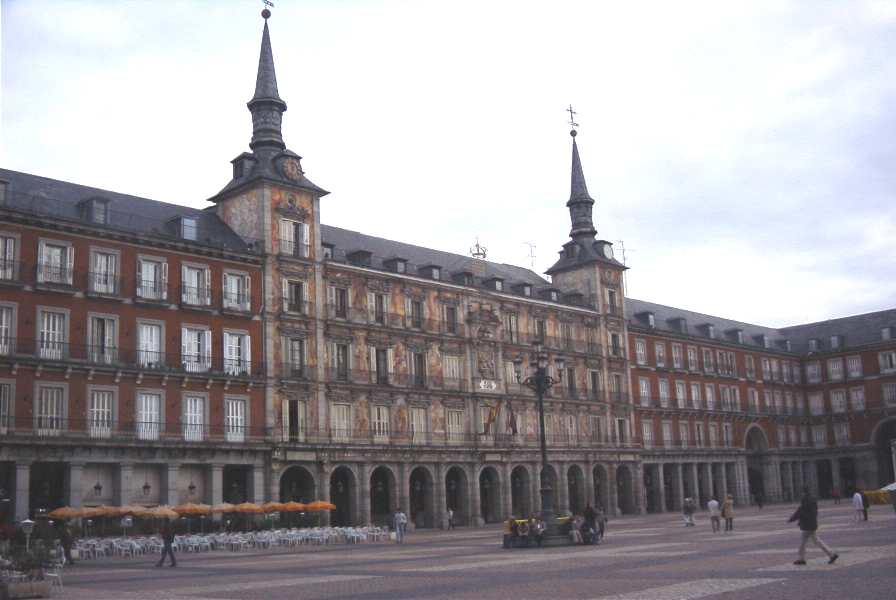
and
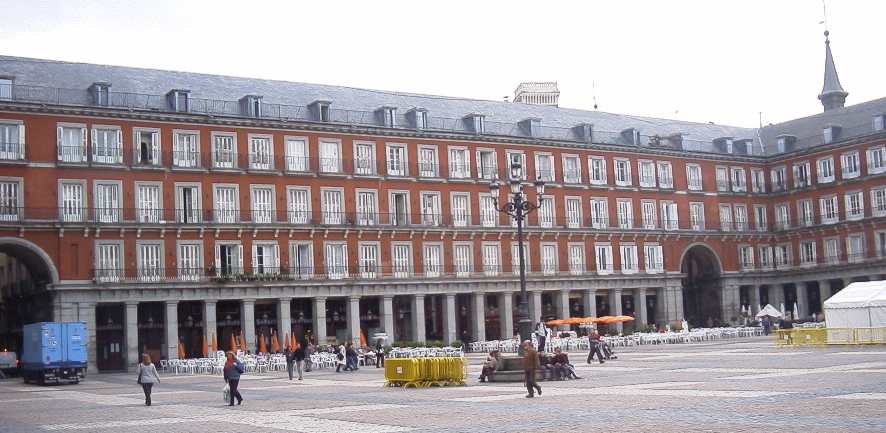
On the Prado museum side of old Madrid lie more modern buildings such as the city's first glass and wrought-iron structure, the Atocha railway station:

And the Agricultural Ministry:
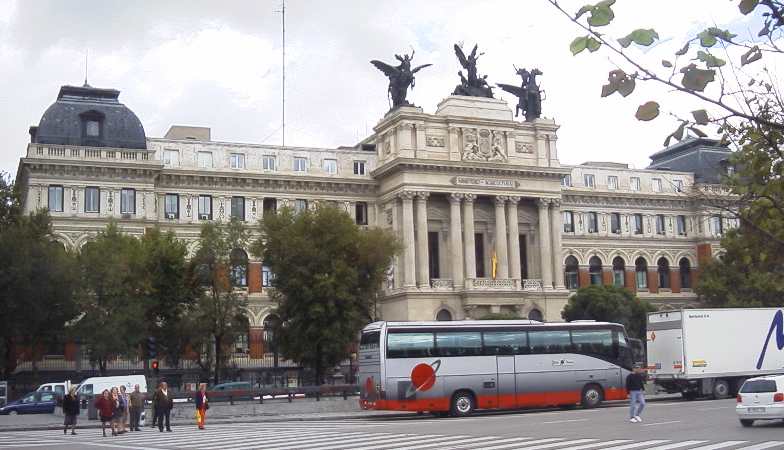
At night some of Madrid shines through its stain glass such as this movie theater:

The next day was my last in Madrid and I packed it with a trip to the Royal Palace and the equivalent of New York's Central Park. Join me by clicking here.
Where do you want to go today? Here's a few choices:
